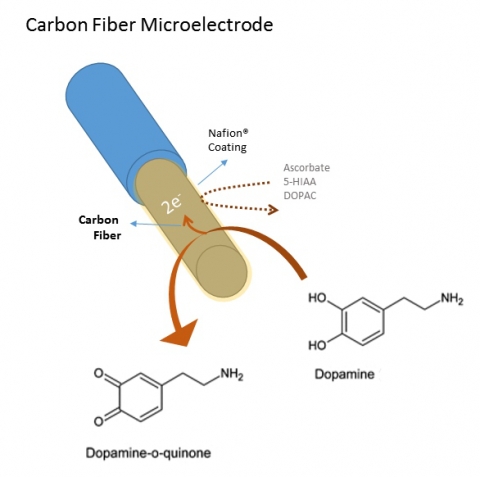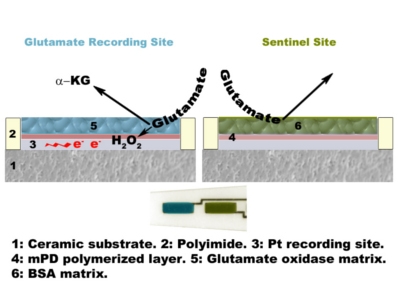In vivo electrochemistry allows the recording of neurochemicals in the brain by implanting microelectrodes directly into the mammalian CNS.
By applying an adequate potential between the microelectrode and a reference electrode, the oxidation or reduction of electroactive species is promoted at the microelectrode surface. The resulting electrical current can be recorded and is directly proportional to the concentration of the neurochemical in the milieu.
Some molecules, such as dopamine, serotonin, hydrogen peroxide or nitric oxide can be oxidized directly at the microelectrode surface. Addition of exclusion layers (such as Nafion® or phenylenediamine) increase selectivity against negatively charged or larger molecules, respectively. In the image shown on the right we can appreciate a direct electro-oxidation reaction of dopamine on a carbon fiber microelectrode.
Other neurochemicals, such as glutamate, acetylcholine, glucose, lactate, are not electroactive. These require enzyme-base biosensors where the respective oxidase enzyme is immobilized at the microelectrode surface. Enzyme-catalyzed oxidation of the desired neurochemical produces the reporter molecule hydrogen peroxide, which is then oxidized directly at the microelectrode active site. This mechanism is detailed in the figure at the right showing how a glutamate oxidase coated microelectrode arrays works.
Continue to Next Section > > > Biosensor Technology


